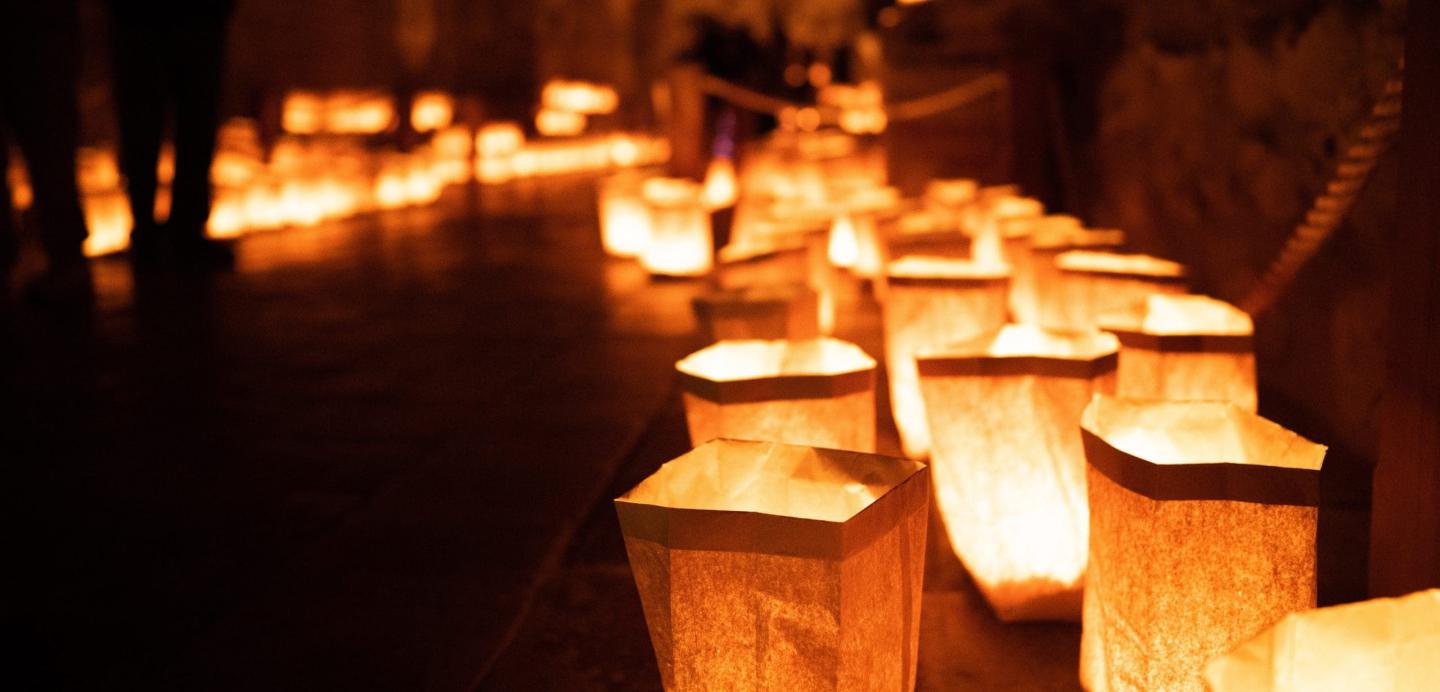
Illuminating Culture in Tonto National Monument

Once a year a warm glow emanates from a hillside in Tonto Basin, outside of Roosevelt Arizona. Although a solitary glow today, 700 years ago there would have been bustling communities throughout the basin each illuminated by fires that would have been used for warmth, cooking, and a central gathering place to share stories and traditions among multiple generations. People have moved in and out of the Tonto Basin ever since, electricity replacing fires; yet the traditions and gathering of generations, especially in December, continue today. To honor and highlight the communities that called the Lower Cliff Dwelling home and to participate in a time-honored Southwest tradition, Tonto National Monument lights the trail and the Lower Cliff Dwelling with 700 luminaria once a year on a night in December.

The tradition of luminaria in the Southwest was created through cultural mixing. Originally thought to have begun in the Rio Grande Valley in the 1590s, the luminaria tradition was practiced by Pueblo communities in what is now New Mexico during Spanish colonization. The Spanish attempted to blend Roman Catholic traditions of Christmas into local cultures and winter traditions in an effort to force conversion onto Indigenous populations. Pueblo communities quietly resisted Catholicism and folded Catholic traditions into their own cultural practice. Many pueblo communities, some of which are descendants of the people who lived in the cliff dwellings at Tonto National Monument, continue to practice this tradition today, helping it spread to many of the former Spanish territories including what today is Arizona.

This cultural mixing and adaptation as a means of survival is not something new to the people who called what is now Tonto National Monument home 700 years ago. In fact, it is this cultural mixing that gives the archaeological sites in Tonto Basin their unique material culture and why the monument was designated a national park site in 1907. Starting in the early 1300s there was an influx of a new group of people who migrated into the Tonto Basin. These people came from the north, from a cultural complex archaeologists call the Kayenta region in north central Arizona. Their arrival initiated a series of changes in how people lived, what they believed, and influenced traditions passed onto generations. At first, tensions ensued. As a generation or two passed, though, the descendants of immigrants and local groups found ways to live together, or at least coexist as neighbors. From these diverse communities emerged a new ideology—a new way of looking at things. Archaeologists called this ideology and the new traditions, practices, and objects associated with it, “Salado.” Although we don’t know for sure what the people who practiced this “Salado” ideology would have called themselves, we see their influence in the places they settled through material culture like pottery, dwellings, trade, and textiles.

One specific material item that became a defining feature of “Salado” is a specific decorated pottery: Roosevelt Red Ware or Salado polychromes. This pottery is multi-colored, usually red, black, and white. Some of the imagery reflects widespread Mesoamerican motifs coming up from Mexico that would have been familiar to local and immigrant groups. Large scale trade routes spread the ideology through a wide geographic area and set up an intricate connection between various communities going down into Mexico and to the coast of California. The people who lived in the Cliff Dwellings would later use this network and trail system to migrate out of the area in the mid-1400s and join thriving communities across the southwest.

People have always moved through time, taking with them traditions and elements of the cultures they were raised or interact with. While enjoying the luminaria, park staff hope that visitors can reflect on those that came before them and their own communities. Tonto National Monument is not just a monument to a people that thrived 700 years ago, it is a continuing reminder and lesson on how people of diverse backgrounds come to think of themselves as one people, while still retaining a sense of their own heritage. What elements of your heritage do you share with others during the holiday season?
Article by Melinda McFarland, Lead Interpretive Ranger and Volunteer Program Manager at Tonto National Monument.
Your support empowers parks!
Your generous gift of $75 or more provides you with a tax-deductible opportunity to make a meaningful impact. You can help support scientific research, promote recreational activities, foster community connections, and inspire the next generation of park stewards.
To make your contribution, click below or visit www.wnpa.org/donate.
By supporting WNPA, you are helping to empower parks for all time. Supporters like you help to make this important work possible.



